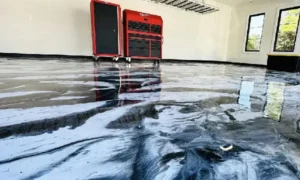The efficient transmission of heat from one fluid to another is made possible by heat exchangers, which are essential tools used in many industries. Heat exchangers are vital for maintaining temperature control and increasing energy efficiency, whether they are used in a power plant, chemical processing facility, or HVAC system. The complex universe of heat exchanger parts must be explored in order to comprehend the operation and upkeep of these devices.
The Basic Elements
- Heat exchanger tubes: These tubes serve as the main passages for both hot and cold fluids. They are made of different materials, such as copper, aluminum, or stainless steel, depending on the use and how corrosive the fluids are.
- Headers and End Caps: The ends of the heat exchanger tubes are sealed with headers or end caps. They are essential for ensuring that the fluid inside the tubes flows smoothly and for guarding against contamination and leakage.
- Tubesheets: The heat exchanger tubes are supported by tubesheets, which also create a tight seal at the tube ends. They are crucial for preserving the heat exchanger’s structural integrity and are often built of sturdy materials like steel.
- Plates or spacers that are carefully positioned in between the tubes are known as baffles. By generating turbulence in the fluid flow, they improve heat transmission and raise efficiency. In addition to provide structural support, baffles aid in maintaining the proper distance between tubes.
- Heat Transfer Fins: To enhance the surface area available for heat exchange, heat transfer fins are sometimes added to heat exchangers, particularly air-to-air or air-to-liquid exchangers. To fit particular applications, these fins are available in a variety of shapes and materials.
Sealing Mechanisms
Gaskets: Gaskets are used to seal the gap between the plates and maintain the separation of the hot and cold fluids. They are available in a variety of materials, such as rubber, silicone, and PTFE, and their selection must take into account the heat exchanger’s operating circumstances.
Sealing Strips: In plate heat exchangers, sealing strips work in conjunction with gaskets. They guarantee a tight seal and stop any fluid from escaping the heat exchanger.
Distributors of Flow
These parts, known as inlet and outlet manifolds, are in charge of effectively transferring the hot and cold fluids into the heat exchanger. These manifolds’ size and design are essential for ensuring even distribution and optimum heat transfer.
Distribution Plates: The fluid is more evenly distributed across the heat exchanger’s tubes or plates with the aid of distribution plates. The exchanger’s steady heat transfer depends on this even distribution.
Enhancing Fluid Flow
- Flow Directors: Flow directors, also known as flow plates, are made to route fluids through the exchanger in a particular pattern. This helps to maximize the efficiency of heat transmission while regulating the flow velocity.
- Bypass valves: Some heat exchangers have flow-rate-adjustable bypass valves that are beneficial for preserving the desired temperature and pressure inside the system.
Components of temperature control.
- Temperature sensors (thermocouples or RTDs) are housed in thermowells, which are protective closings. These sensors keep track of the fluid’s temperature and enable accurate temperature management.
- Temperature Control Valves: To ensure that the desired temperature is maintained, temperature control valves are used to control the flow of one of the fluids. In situations where precise temperature control is required, they are essential.
Maintaining and Cleaning
- Access Covers: Access covers offer a practical way to examine, maintain, and clean the heat exchanger. They are positioned carefully to make it simple to reach important parts.
- Cleanout Ports: Cleanout ports are made to make it simple to remove any debris or impurities that could collect inside the heat exchanger over time and eventually reduce its performance.
Devices for Monitoring and Sensors
Pressure gauges are crucial for keeping track of the fluid pressure inside the heat exchanger. A heat exchanger or the system it is a part of may have problems if there are abrupt changes in pressure.
The rate of fluid flow via the heat exchanger is determined by flowmeters. To make sure that the heat exchanger is operating within the appropriate parameters, it is imperative to have access to this data.
Factors to Consider in Material Selection
The system’s longevity and efficiency are directly impacted by the material choice made for the heat exchanger parts. Cost, thermal conductivity, and corrosion resistance are a few of the major variables affecting material choice.
For instance, to ensure lifespan in applications involving corrosive fluids, high-grade stainless steel or titanium is suggested. In contrast, due to their superior thermal conductivity, copper or aluminum may be chosen for applications where cost is a factor.
Upkeep and Optimization
The longevity and effectiveness of heat exchanger parts are dependent on appropriate maintenance and sporadic servicing. Leak prevention and sustaining effective heat transmission depend on routine cleaning, inspection, and replacement of worn-out parts, such as gaskets.
Conclusion
For heat exchanger systems to operate consistently, a thorough understanding of all of their numerous parts is required. The key to extending the lifespan and maximizing the heat transfer capabilities of the heat exchanger is routine maintenance, the use of high-quality parts, and adherence to manufacturer instructions.






























